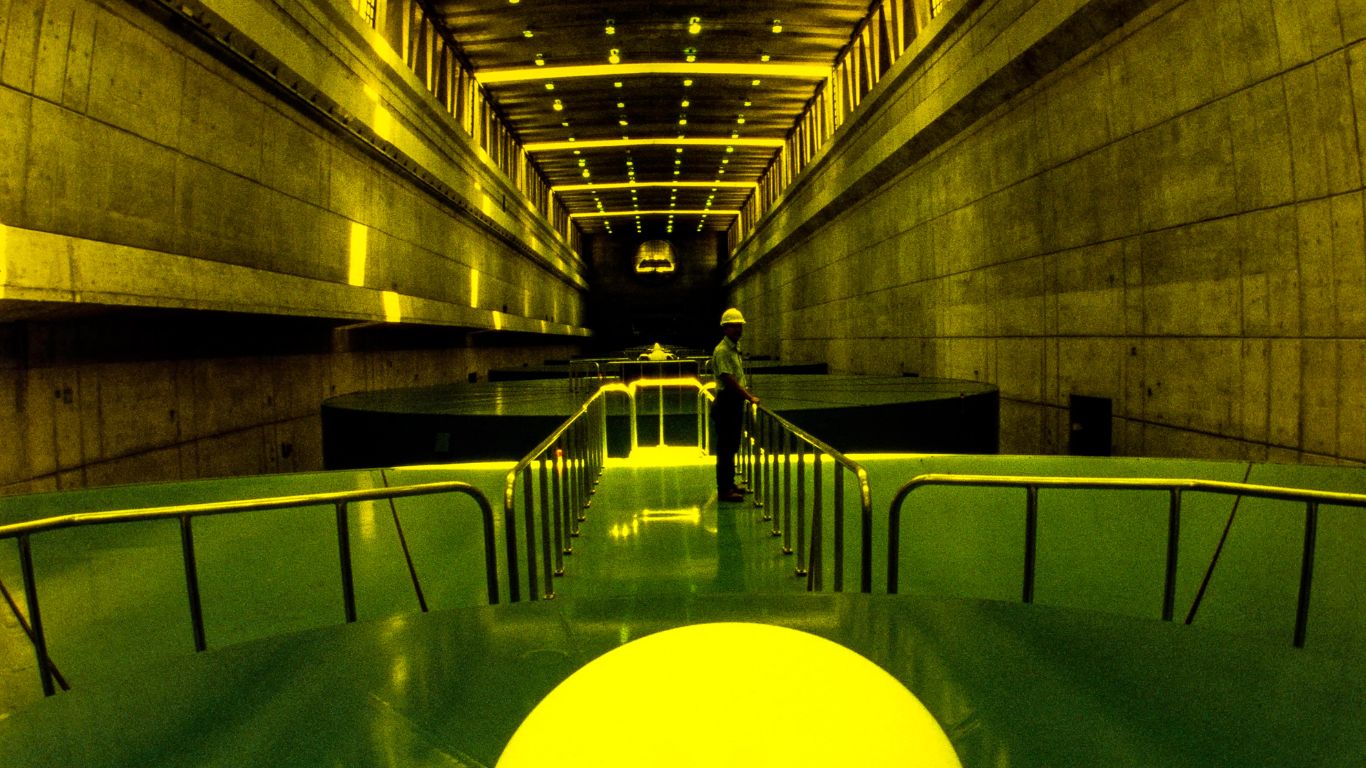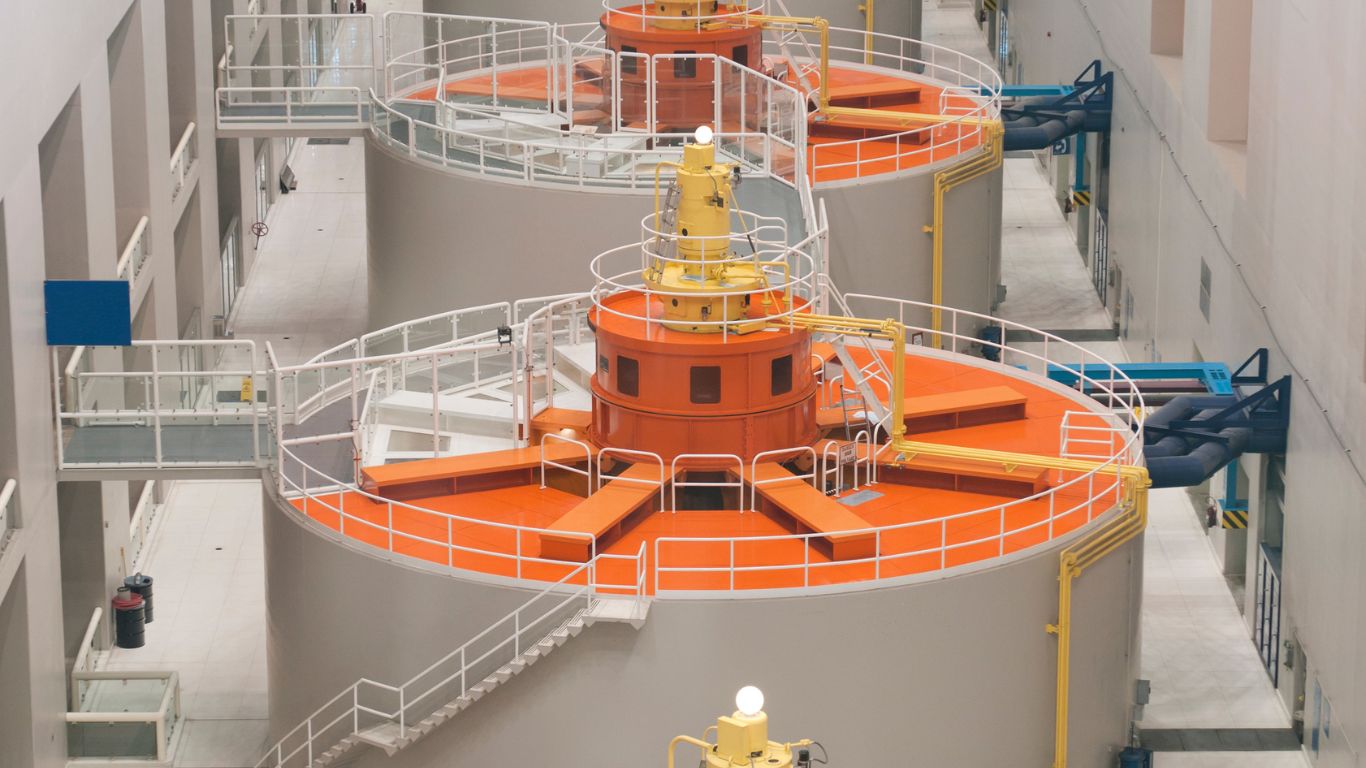Hydropower: A Guide to Sustainable Energy

In the dynamic landscape of global energy, hydropower generation is not only a solution, but also a cornerstone of the pursuit of long-term sustainability. From the complex components and environment to future innovation, functionality and functionality, this detailed exploration will carefully dissect each aspect, highlighting how it can play a key role in shaping generations to shape the future of clean and green energy.
Revealing the mechanical mechanisms of hydraulics:
Dam or transfer structure:
The core of a hydropower plant is the strategic construction of dams or transfer structures. These engineering miracles are not just obstacles, but also create huge reservoirs that act as a repository of huge potential energy stored in the water flow. The controlled release of this energy is the essence of hydroelectric power.
penstock:
As a circulatory system for hydroelectric plants, the pelvis is the key conduit that can guide water from the reservoir to the precise turbine. Their design is essential for maintaining optimal flow, ensuring that the potential energy of water is effectively converted into mechanical capabilities, laying the foundation for the next step in the energy production process.
turbine:
Hydraulic bands include a variety of turbines, each of which is uniquely designed to take advantage of specific water flow conditions. From the iconic Pelton turbines with optimized high head efficiency to the multi-functional Kaplan turbines known for their adaptability, these mechanical wonders play a crucial role in converting the kinetic energy of water into mechanical forces, an essential step in the conversion process.
dynamo:
The elegant dance of turbines and generators marks the key point in the conversion of hydropower. Through electromagnetic induction, rotational energy is converted into electricity, representing the essence of hydroelectricity. The synergistic action between the turbine and generator forms the backbone of the hydropower plant’s power generation capacity.
Powerhouse:
Powerhouses House Indrice Mechanics act as the neural center of the nervous system that coordinates mechanical and electrical components. This orchestration ensures that the energy of water is seamlessly converted into a reliable power source. A strong country is more than just a structure. This proves that human creativity and engineering strength use natural forces to continuously generate energy.
Transmission line:
Complete the energy symphony, and the transmission line acts as an artery distributed on the grid to generate electricity. This interconnected network ensures seamless delivery of clean and sustainable capabilities to homes, industries and communities. The efficiency and reliability of transmission lines are crucial to realizing the full potential of large-scale power generation.
Navigation environment considerations:

Habitat impact:
While crucial to energy production, the construction of dams still requires a nuanced approach to minimize the impact on aquatic habitats. Strategies for habitat preservation and restoration become an integral part of responsible hydraulic development. The long-term health of the ecosystem is a core consideration in ensuring the sustainability of hydropower projects.
Water quality and temperature:
Detailed planning to solve downstream issues related to water quality and temperature. Mitigation measures are designed to minimize disruption to aquatic ecosystems, thus ensuring their ongoing health. Implement a long-term monitoring plan to track changes and adapt strategies accordingly to demonstrate commitment to ongoing environmental management.
Sediment transport:
Considering changes in downstream sediment transport, changes in riverbed dynamics may have cascaded effects on the ecosystem. The responsible hydropower project strives to protect natural riverbed patterns and support biodiversity by living in harmony with the environment. The long-term impact of changing sediment transport is the focus of planning and implementation of hydropower plans.
Greenhouse gas emissions:
Despite being a clean energy source, the decomposition of organic matter in reservoirs can still lead to greenhouse gas emissions. Ongoing research and innovative solutions are designed to minimize long-term environmental impacts. The focus is on developing strategies to promote sustainability to address potential emissions through advanced technologies and practices.
Opening up the future of hydraulics:
River Hydropower Plant:
In pursuit of long-term sustainability, river plants have revolutionized hydroelectricity by eliminating the demand for a wide range of reservoirs. This approach prioritizes environmental harmony, allowing the river to maintain its natural dynamics. The River Project represents a visionary step in ensuring a sustainable energy future that respects the complex balance of aquatic ecosystems over the years.
Fish-friendly turbines:
The evolution of turbines designed with aquatic life marks a leap in biodiversity conservation. These fish-friendly turbines strive to adapt to fish migration patterns over the long term, thus coexisting between hydropower and aquatic ecosystems. The focus is on designing technology that stands the test of time to promote ecological resilience and sustainability.
Pumped water storage hydroelectric power generation:
To address challenges related to intermittent energy generation, the pumping storage system is the central stage. Their ability to effectively store and release energy has made a significant contribution to grid stability, providing dynamic solutions to the evolving energy landscape. Pumped storage of water and electricity is a long-term strategy to meet the growing demand for reliable and flexible energy storage.
Functions and functions:


Load balancing:
Hydropower plants have performed well in load balancing and adapted to the fluctuations of electricity in the long run. Their ability to quickly adjust output makes them crucial to maintaining grid stability. The continuous efficiency of load balancing ensures a reliable and consistent power supply, which contributes to the stability of the energy grid in the coming years.
Base load power:
Hydropower acts as a reliable base load power supply, providing a consistent and stable power supply. This fundamental role contributes to the overall reliability of long-term energy grids. For the foreseeable future, hydroelectric power plants’ capabilities as constant power providers position them as an important part of their energy infrastructure.
Renewable energy integration:
Hydropower capacity is seamlessly integrated with other renewable energy sources, forming a comprehensive and diversified energy portfolio. This synergy ensures a reliable and sustainable energy supply over the long term. A collaborative approach to renewable energy integration positions hydropower as a key to a global transition to a more sustainable and resilient energy portfolio.
Hydropower reservoirs as multi-purpose spaces:
Hydroelectric storage rooms provide multi-purpose space beyond energy generation. Recreation, water supply and flood control are other functions that enable these reservoirs to bring valuable assets to the community over the long term. The ongoing benefits of hydropower reservoirs contribute to the socio-economic development of the region, making it an integral part of long-term planning and community well-being.
Environmental monitoring and mitigation:
Modern hydropower projects combine advanced monitoring systems and mitigation measures. These technologies help track environmental changes and ensure rapid response to any potential impact on the ecosystem. The long-term commitment to environmental monitoring and mitigation emphasizes dedication to responsible and sustainable practices. Continuous improvements in these systems ensure adaptability to change environmental dynamics over the years.
in conclusion:
In the vast and evolving landscape of sustainable energy, hydropower generation is not only a source of electricity, but also a long-term responsible innovation. This detailed exploration, covering complex mechanisms, environmental considerations, future innovations, and the functions and functions of hydropower, emphasizes its role in shaping future generations of cleaner, greener, greener, greener, greener, greener, greener, greener, greener, greener, greener, greener, greener, greener, greener, greener, greener, greener, and more sustainable energy. As the world navigates the complexity of energy transitions, hydropower emerges in the form of a lighthouse, allowing the power of nature and technology to coordinate the lasting interests of the present and future generations.



